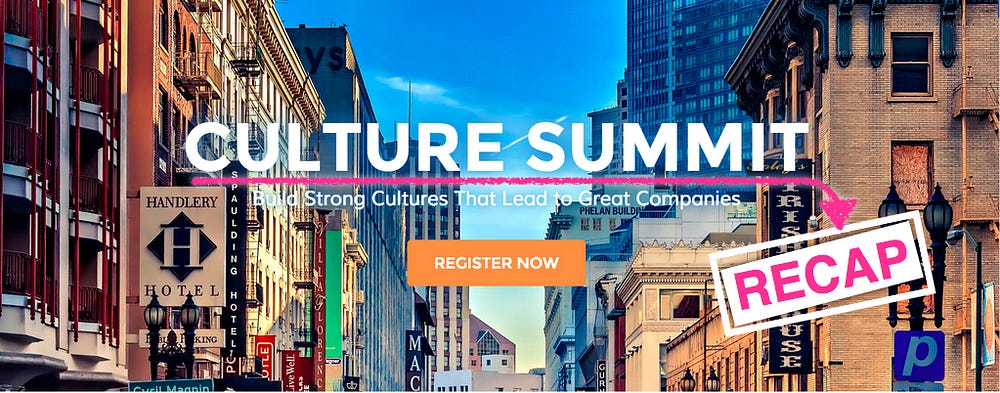A Few Non-Obvious Things I Learned at Culture Summit
By Tiago Forte of Forte Labs
On Friday I attended the inaugural Culture Summit in San Francisco. Hung Pham and the team at MTCA put on a great event, with speakers, sponsors, vendors, and attendees from some of the most influential companies in the Bay.
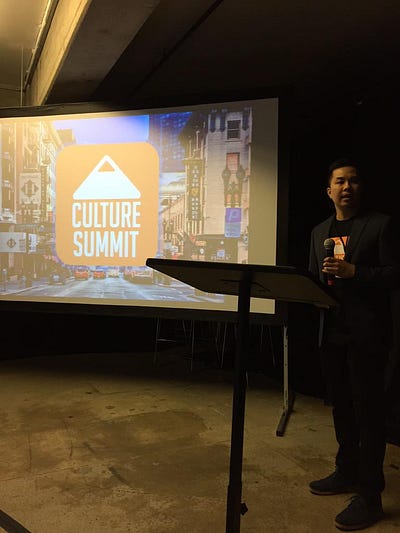
My motivations for attending were two-fold: first, because I’m starting to realize that to take my productivity consulting/training to the next level, I’m going to have to go deeper than day-to-day habits, and start working with the culture that informs them. Second, Forte Labs is hiring, and I want to make sure I create a strong culture from day one.
Signing up for this conference, I was afraid it would be mostly fluff, the stuff of “Our Company Values” plaques and vapid press releases about “employee engagement.” And there was definitely a lot of that.
But I was also pleasantly surprised by the substance. HR departments everywhere are quickly evolving — from buffers built to protect the company from its own employees, to designers of compelling EX (employee experience) — and this is changing the game.
Here are the most interesting, non-obvious lessons I learned as a newbie in the world of “culture.”
What the #%!@*$ is culture?
First, what it’s not:
- What people think or believe
- What employees think it is (this is the more superficial “observational culture”)
- What you wish it was (this would be “aspirational culture”)
- Engagement (this is just one of many “outputs” of culture)
As Damian Madray explained in his thoughtful talk, true culture is the “way we do things here”; it is the collective behavior of a company’s employees.
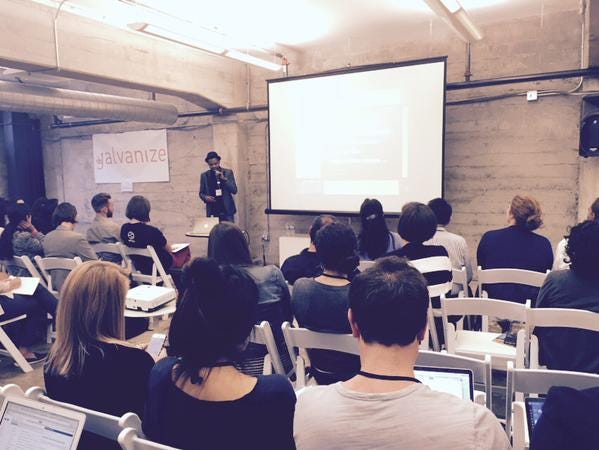
Don’t tell me what employees think, believe, or value, tell me how they behave under conditions of uncertainty. Enron apparently had their “corporate values” engraved on their office walls. I’m sure they were very inspirational. But what we remember today is the unethical actions that destroyed them.
Defining culture in terms of actions opens it up to a slew of new tools. It makes it something explicit that can be measured, understood, and improved over time. It makes it tangible, which creates accountability, which creates change.
Go beneath the salad bar
As Ellen Petry Leanse explained in her talk, we often think of employee perks like catered meals, swing sets, dog-friendly offices, and free gym memberships when we think of a particular company’s culture. But these are really just the tip of the iceberg. What matters is what lies beneath, the “why” of the perk you’re offering.

Two companies may offer free lunch to their employees, but with very different motivations: for one, it is a way to get people to stay at work longer and work harder; for another, it may be to encourage conversation and build community.
You may be wondering — “Why not both?” — but the truth is that the primary motivation will always find its way to the surface. In the small decisions about how, when, where, and by whom lunch is served, in the tiny conflicts between lunch and other priorities, the real reason behind the perk will inevitably be unmasked. And employees will be watching.
Only when that happens will you know whether this perk is building culture, or undermining it.
Measuring culture
Fresh off the Quantified Self Conference the previous week, I assumed Culture Summit would be the polar opposite. I thought the former would be about objective measurement, and the latter about feel-good slogans.
Little did I know, the culture space is in the midst of a measurement revolution at least as impactful as what’s going on in personal health.
The stars of the conference were companies like CultureAmp, Glint, and Roundpegg, who are taking their customers from tedious annual engagement surveys to a much more real-time, data-driven approach to employee satisfaction.
As in seemingly every field, the fingerprints of Lean Methodology were everywhere. CultureAmp CEO Didier Elzinga described the LEARN-ACT-REPEAT process they follow to identify and implement cultural changes.
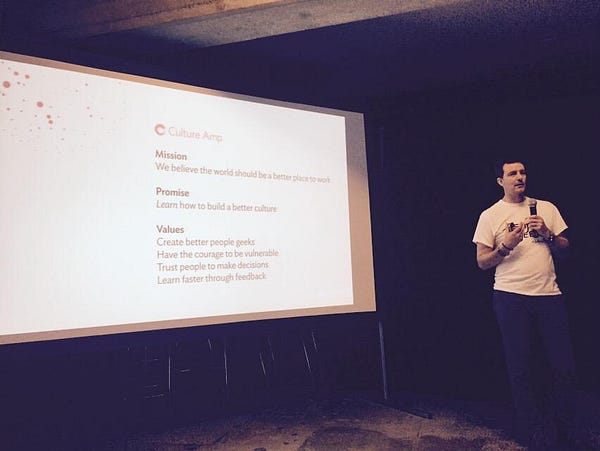
He told the story of a customer whose executives believed that accountability was their most pressing problem. After a series of surveys, they discovered that their employees were split down the middle — half had “personal responsibility for their work” as their #1 value, while the other half had “breaking rules to get things done” as their top value. At first they thought that this reflected different departments (like marketing vs. legal), but further analysis showed that the split was present in 6 out of 7 departments. This insight guided their efforts at changing their culture.
This commitment to measurement was exemplified in Didier’s final point: once you measure the status quo, instead of getting excited and trying to CHANGE ALL THE THINGS!, you should instead change just one thing, and then measure again. Only this way can you know what’s working, and what’s not.
Not nearly as exciting, but this is the mentality of a scientist. I’d love to see more collaboration between the QS and Culture communities.
Manage the gap
Many of the speakers mentioned the importance of cultural “alignment” between individuals, teams, and the company as a whole, with Natalie Baumgartner mentioning research showing that this alignment predicts company performance.
But this has always brought up questions for me: doesn’t hiring for “culture fit” implicitly mean hiring people that are just like you (as argued in the NYT recently), thus undermining diversity? And what do you do if you find your employees are misaligned, besides brainwashing or firing en masse?
I liked Baumgartner’s answer: the job of culture designers is not to constantly change the company values to align with employees’ values, nor to force employees to align with company values. Their job is to identify the core values of both the company and employees, and help them manage the gap. After all, according to Baumgartner, “the ROI on changing people is abysmal.”
This brings up all sorts of interesting thought experiments that go way beyond company perks:
- How would a company that values consistency and tradition provide a safe space for innovative rebels? (Clayton Christensen touches on this when he advocates for “skunkworks” isolated not only physically, but culturally from the main company)
- How can companies create a dynamic mix of open-plan workspaces, closed offices, and remote work, allowing each person to adjust their exposure to the rest of the company as necessary? (Instead of forcing everyone to work the exact same way)
- How can companies manage the ongoing gap between the need to do high-quality, detail-oriented work, and the desire to foster innovation through messy rapid prototyping?
Baumgartner’s quote above suggests (to me) that these questions are not solved through top-down policies and procedures, but through an HR department that understands that alignment does not equal conformity, and is ready to help employees navigate the distinction.
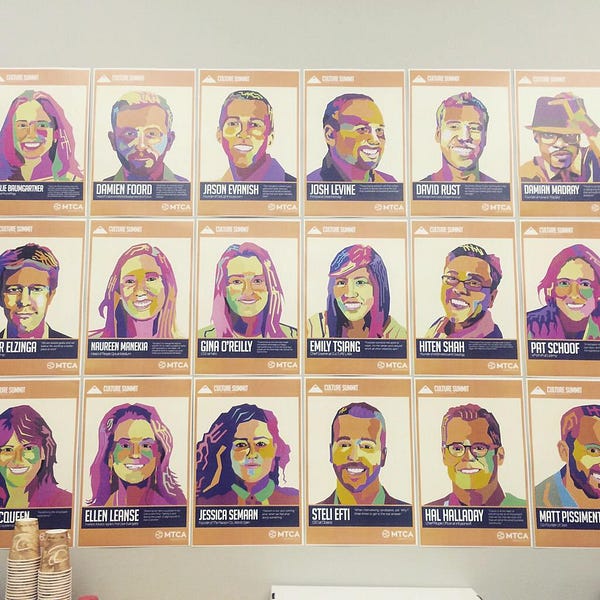
Some real-world examples
A big goal of mine in attending this event was to find specific examples of what it means to create a healthy culture. If culture is behavior, what are the behaviors we can take to turn the tide?
Here are some of the most interesting examples I heard:
Onboarding and offboarding
Pat Schoof, the VP of HR at Udemy, described her incredibly progressive approach to the employee experience: she says that the most important days in an employee’s tenure at a company are the first and last days (which aligns with neuroscience research on how the brain remembers experiences).
She makes an effort to create a great experience on new hires’ first day, with balloon welcomes, company-wide announcements, and a well-organized onboarding process. More unusually, she tries to make their last day just as memorable, regardless of the reason for leaving, knowing that this ex-employee will continue to represent the company as they continue their career.
Nina McQueen of LinkedIn echoed this idea with her example of the LinkedIn Alumni Network, a huge group of ex-employees who continue to be involved with the company in some way. Contrast this with virtually every other ex-employment experience I’ve ever heard of, where you are persona non grata the day you leave.
Integration of culture tools into day-to-day work
There were a number of examples of “employee engagement” breaking out of the strict confines of annual surveys and awkward performance reviews, to become a part of people’s day-to-day workflows.
Reflektive does this by adding a plug-in to your email interface, allowing you to input quick notes on a specific interaction with a specific person, either to send to them as feedback, or for your own notes. I can see a lot of value in having performance discussions around tangible examples, instead of the subjective opinions of managers.
Another great example of this was presented by Matt Pizzimenti of Olark. His team is mostly remote, and they developed their company values as a list of hashtags like #chillout, #practiceempathy, and #helpeachother. Using these hashtags within the various messaging applications they use allows them to 1) quickly refer to common values in a non-preachy way, 2) call out examples of people acting on these core values for special recognition, and 3) keep a record of example behaviors for later retrieval.
When I worked at an Apple Store in college, we kept the Apple “code of conduct” on a little card tucked into the back of our name badges. It was a tangible artifact representing our commitment to “surprising and delighting” our customers. These tools are the same idea repackaged for the digital, mobile age.
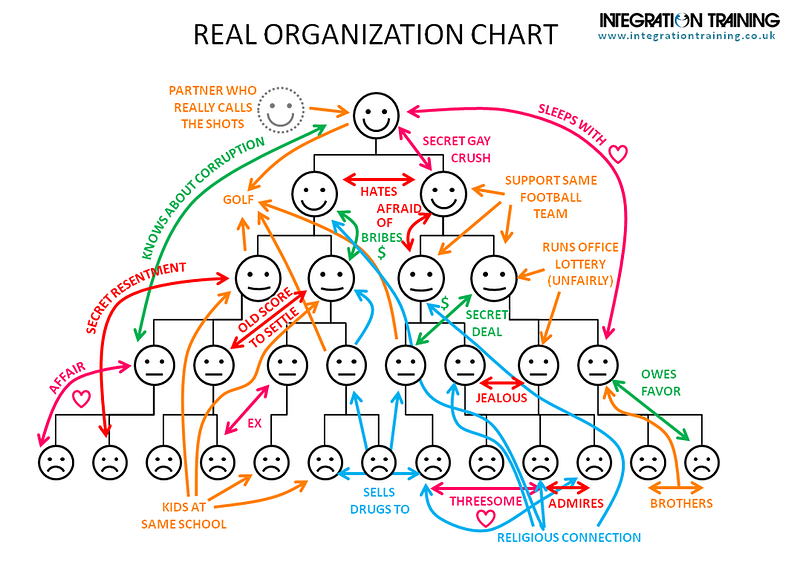
More structured service days
I’ve long been skeptical of company “volunteer days.” It just didn’t seem like companies were the best vehicle for community service, with their tangled interests and incentives.
But Nina McQueen made a good case for LinkedIn’s monthly InDays — one day per month that all employees use to work on special projects, volunteer in the community, or learn new things.
Two things set the idea apart for me: each month has a special theme, allowing the company to more clearly articulate the “why” of the day, and focus their efforts on a narrow target that is more likely to make a difference. Themes include community, creativity, environment, giving back, play, culture, relationships, wellness, learning, reflection, and vision.
A team of programmers can spend the day building a more efficient backend system for an NGO recruitment drive, while those who like to get their hands dirty can be signing up volunteers on the ground. Everyone can contribute to the same theme while using their unique talents.
Second, the fact that this tradition has grown to many other locations around the world, including other companies and organizations. It seemed clear to me that their commitment to InDays was much more than lip service.
Culture is to employees what branding is to customers
As we heard from Damian Madray in a breakout session on culture design, culture is to employees what branding is to customers.
Branding enshrines the symbolic values that make your product more than a commodity. Culture enshrines the values that make your job more than a paycheck.
Branding integrates seemingly disconnected products and services into a coherent lifestyle. Culture integrates disconnected policies and procedures into a coherent workstyle.
The best branding campaigns come from deep inside a company, because it is only these bedrock values that can provide the authenticity and consistency that make the brand convincing. What do we find when we look into the soul of a company? Its culture.
Airbnb came up constantly as an example of a culture-first company, and in a later conversation with a friend, he told me about a room at Airbnb HQ called “The Library.” Apparently it is styled to look like an old-fashioned library, with wall-to-wall books and clerk-style green reading lamps. Not only is this just plain cool, creating a silent working environment that everyone understands, I think it also expresses a deep-seated belief within their culture: that physical spaces change the way we think, feel, and relate. Intentional spaces can support intentional work.
Didier Elzinga described it this way: branding is the promise you make to your customer; culture is how you deliver on it. Cost and efficiency used to be the heroes of sustained competitive advantage. Google made engineers the heroes. Apple made designers the heroes. Time will tell if Airbnb and others succeed in making culture the hero.
Final thoughts
The day was a whirlwind, but I came away with a distinct feeling: culture is way more than a framed Mission Statement on the wall. It’s way more than bean-bag chairs and standing desks.
It is the working title for something that is just beginning to emerge, something we’re just beginning to understand: an emergent property of purpose-driven groups of humans, a force that’s been around since before we walked on two legs, and that we’re finally beginning to recognize lies at the intersection between individual satisfaction and business performance in a chaotic, competitive, creativity-driven world.
If you are working on any aspect of behavior change within an organization (and I believe we pretty much all are), culture answers the questions: What will they do after I leave the room? What will they do when they encounter a novel situation? Why have these people chosen to spend a significant portion of their lives together? And these turn out to be the most important questions. Everything else is wishful thinking, or empty PR.
I’m looking forward to seeing how the role of culture continues to evolve. I’m excited to see startups who care about these things taking their place on the world stage. And I very much intend to continue thinking of my work in the context of sustainable, humane, intentional work cultures.
I hope you’ll do the same.
Follow us for the latest updates and insights around productivity and Building a Second Brain on Twitter, Facebook, Instagram, LinkedIn, and YouTube. And if you're ready to start building your Second Brain, get the book and learn the proven method to organize your digital life and unlock your creative potential.
- POSTED IN: Entrepreneurship

